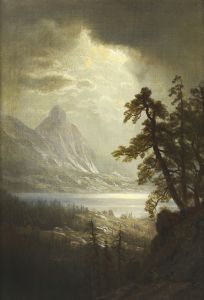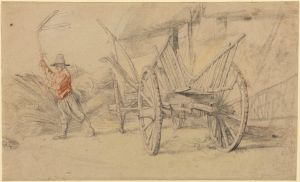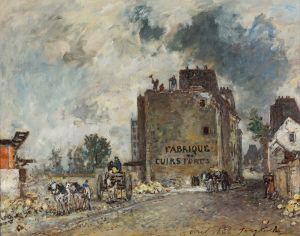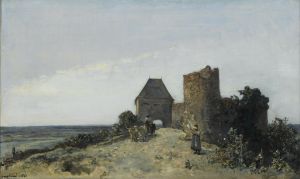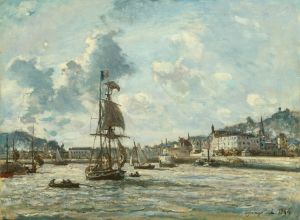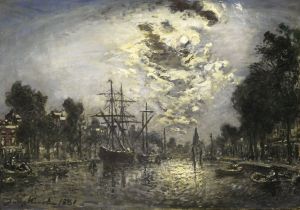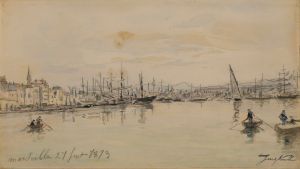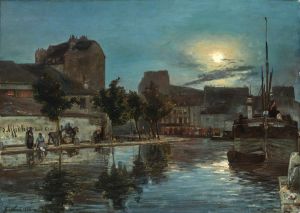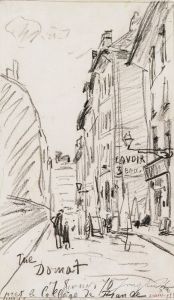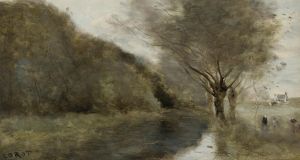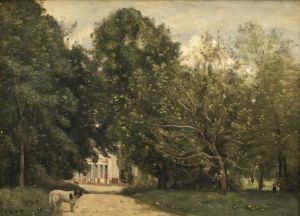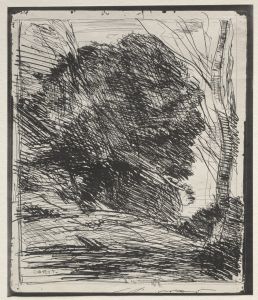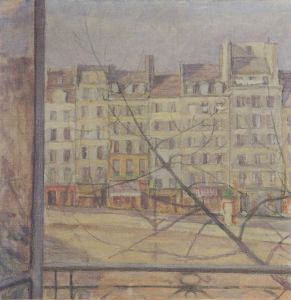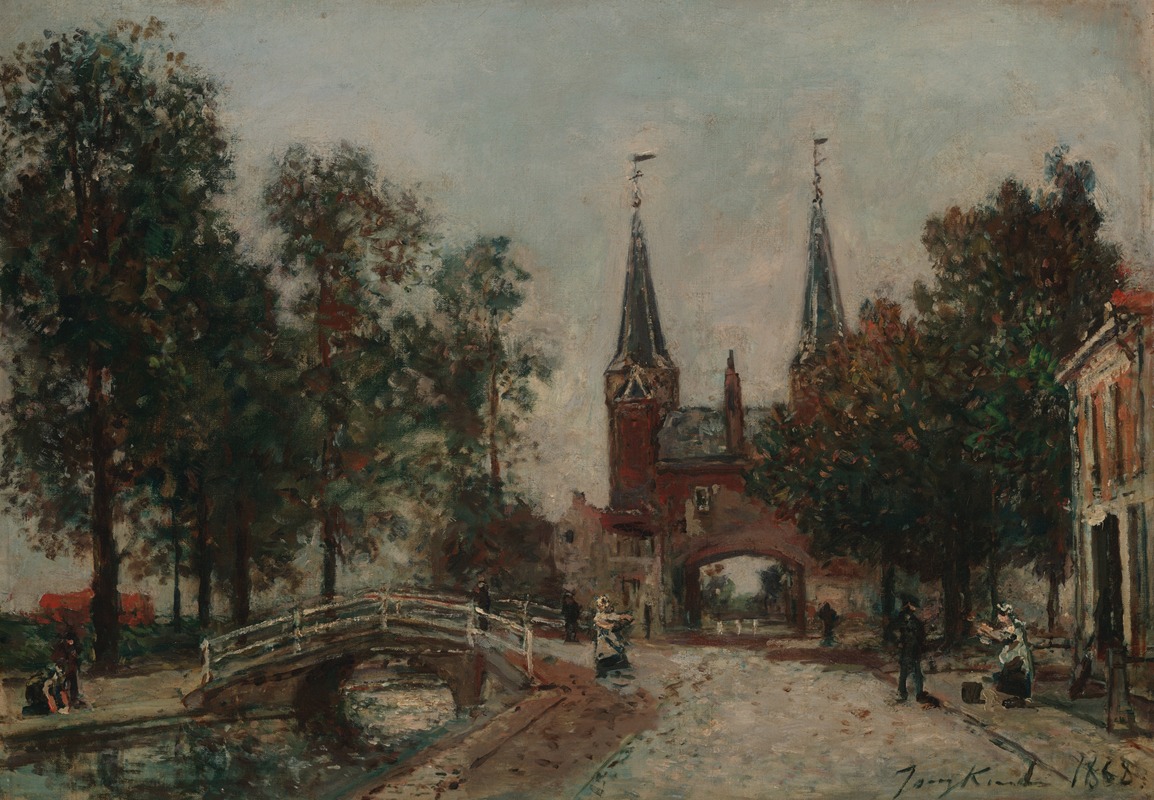
Scene at Delft
A hand-painted replica of Johan Barthold Jongkind’s masterpiece Scene at Delft, meticulously crafted by professional artists to capture the true essence of the original. Each piece is created with museum-quality canvas and rare mineral pigments, carefully painted by experienced artists with delicate brushstrokes and rich, layered colors to perfectly recreate the texture of the original artwork. Unlike machine-printed reproductions, this hand-painted version brings the painting to life, infused with the artist’s emotions and skill in every stroke. Whether for personal collection or home decoration, it instantly elevates the artistic atmosphere of any space.
"Scene at Delft" is a painting by the Dutch artist Johan Barthold Jongkind, created in 1862. Jongkind, born on June 3, 1819, in Lattrop, Netherlands, is often associated with the early stages of the Impressionist movement, although his work is generally categorized under the Realist and Romantic styles. He is particularly known for his landscapes and marine scenes, which often depict the Dutch and French countryside with a keen sense of light and atmosphere.
"Scene at Delft" exemplifies Jongkind's skill in capturing the serene and picturesque qualities of the Dutch landscape. The painting portrays a tranquil view of the city of Delft, a historic city in the Netherlands known for its canals, churches, and as the birthplace of the famous painter Johannes Vermeer. In this work, Jongkind employs his characteristic loose brushwork and a delicate palette to render the reflective water surfaces and the soft, diffused light of the sky.
The composition of "Scene at Delft" is balanced and harmonious, with a strong emphasis on the interplay between water and sky. The painting features a canal that leads the viewer's eye into the distance, flanked by buildings and trees that are reflected in the calm water. The use of light and shadow in the painting creates a sense of depth and tranquility, inviting the viewer to experience the quiet beauty of the scene.
Jongkind's technique in this painting demonstrates his ability to capture the fleeting effects of light and weather, a skill that would later influence the Impressionists. His use of color is subtle yet effective, with a predominance of blues and greens that evoke the cool, moist atmosphere of the Dutch landscape. The reflections in the water are rendered with a delicate touch, adding to the overall sense of calm and stillness.
Jongkind's work was highly regarded by his contemporaries, and he played a significant role in the development of modern landscape painting. Although he spent much of his career in France, his Dutch heritage is evident in his choice of subjects and his approach to capturing the natural environment. "Scene at Delft" is a testament to Jongkind's mastery of landscape painting and his ability to convey the serene beauty of the Dutch countryside.
The painting is part of the collection of the Musée d'Orsay in Paris, which houses many of Jongkind's works. The museum's collection includes a range of paintings, drawings, and watercolors that showcase his development as an artist and his contributions to the art world. "Scene at Delft" remains a significant example of Jongkind's work and continues to be appreciated for its artistic and historical value.






